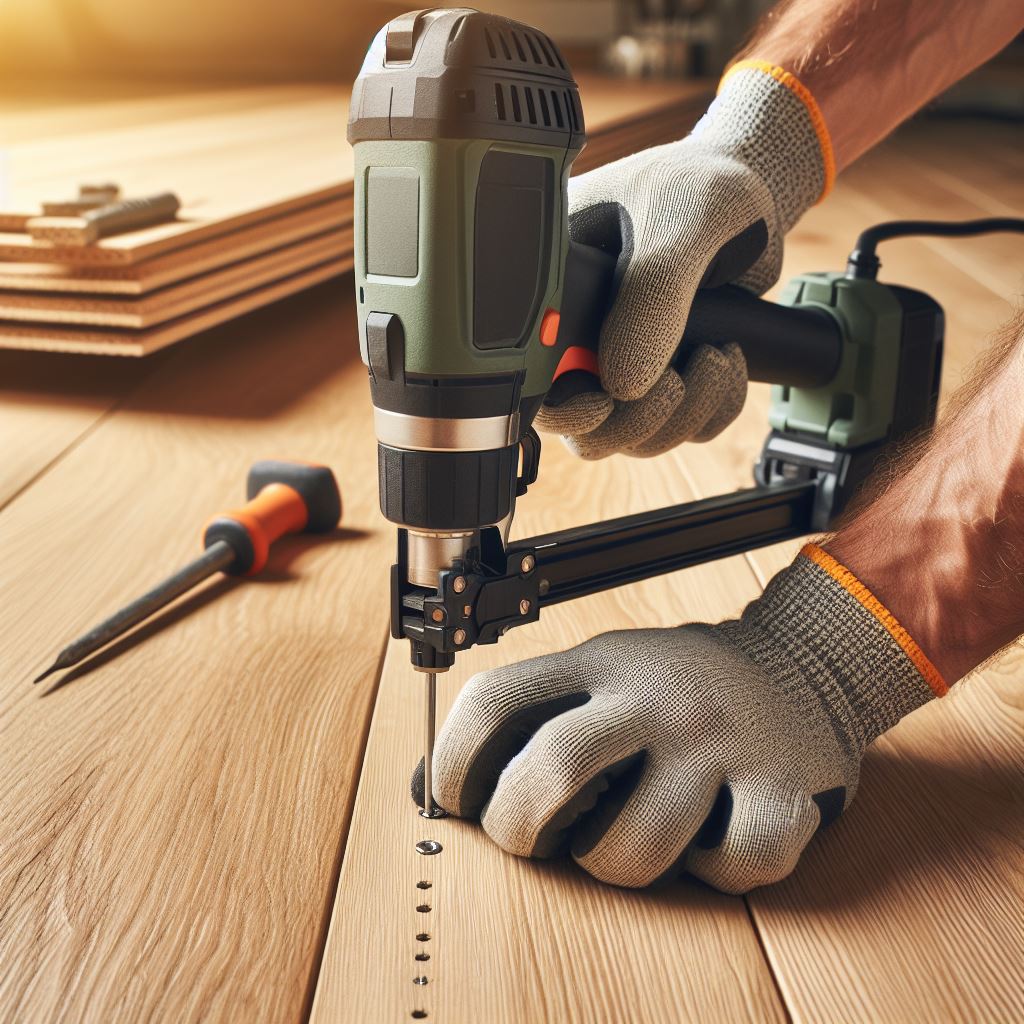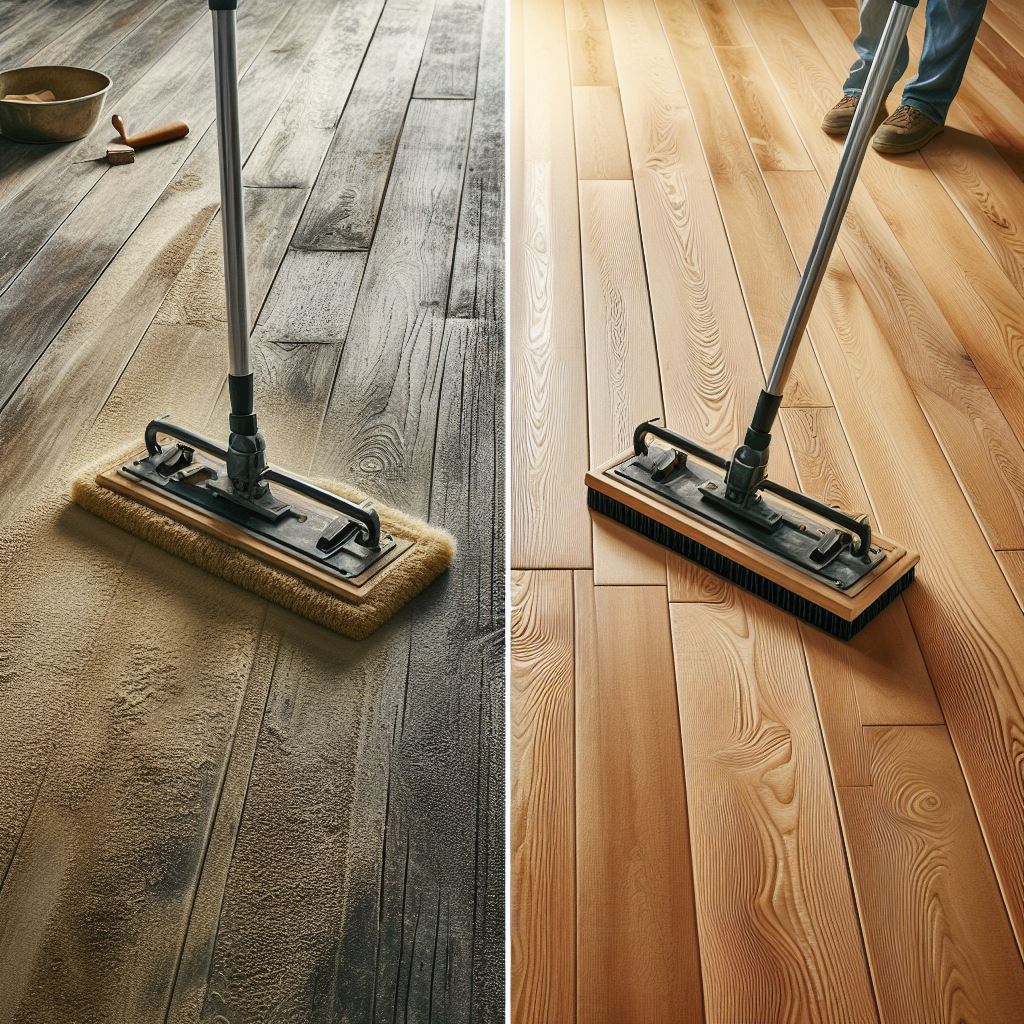Engineered wood flooring has become a popular choice for homeowners seeking the classic, timeless look of hardwood with enhanced durability and stability. Unlike traditional hardwood, engineered wood is constructed from multiple layers of wood veneers, making it more resistant to changes in temperature and humidity. This unique structure not only adds to its longevity but also makes it an ideal option for areas where solid hardwood might not be suitable, such as basements or kitchens.
One of the primary benefits of engineered wood flooring is its versatility in design. With a wide array of finishes, textures, and colors available, you can effortlessly find a style that complements your home’s aesthetic. From rustic, reclaimed wood appearances to sleek, contemporary finishes, the options are virtually limitless. Additionally, the top veneer layer of engineered wood can be made from a variety of wood species, including oak, maple, and walnut, providing even more customization possibilities.
At Paradise Spaces, we understand that choosing the right flooring is a significant decision. That’s why we offer a comprehensive selection of engineered wood flooring to cater to diverse tastes and requirements. Our experts are here to guide you through the process, ensuring you find the perfect match for your home. Request a free estimate or email us at sales@paradise-spaces.com to get started on your flooring journey today.
Benefits of Engineered Wood Flooring

Engineered wood flooring offers several compelling benefits that make it a superior choice for many homeowners. One of the standout advantages is its exceptional durability. Thanks to its multi-layer construction, engineered wood is more stable and resistant to environmental changes compared to solid hardwood. This means it won’t warp or swell as easily, making it suitable for areas with fluctuating temperatures and humidity levels.
Another significant benefit is its ease of installation. Engineered wood flooring can be installed over various subfloors, including concrete, which is often a challenge for traditional hardwood. Many engineered wood products also come with click-lock systems, which allow for a straightforward floating installation, saving both time and labor costs.
Engineered wood flooring is also eco-friendly. By using a thinner top layer of premium hardwood and more readily available wood species for the core layers, this type of flooring makes more efficient use of natural resources. Additionally, many manufacturers adhere to sustainable practices, further reducing the environmental impact.
Moreover, engineered wood flooring offers remarkable design flexibility. With a plethora of finishes, colors, and textures available, you can easily find a style that fits your home’s decor. Whether you prefer a traditional, rustic look or a modern, sleek appearance, engineered wood can cater to your aesthetic preferences.
Lastly, engineered wood floors are easy to maintain. Regular sweeping or vacuuming and occasional damp mopping are generally all that’s needed to keep them looking beautiful. This low-maintenance requirement makes engineered wood an excellent choice for busy households.
Popular Designs and Patterns
When considering engineered wood flooring, the variety of designs and patterns available can be both exciting and overwhelming. One of the most popular designs is the classic plank style. This timeless look features long, wide boards that can make any room appear more spacious and elegant. The plank style suits a variety of home décors, from traditional to contemporary.
For those seeking a bit more flair, the herringbone pattern is a fantastic choice. This intricate design involves arranging the wood planks in a zigzag pattern, creating a visually striking effect that adds a touch of sophistication and luxury to any space. The herringbone pattern is especially popular in entryways and living rooms where it can be showcased to its full potential.
Another trending option is the chevron pattern. Similar to herringbone, chevron involves aligning the planks in a V-shaped pattern, but with the ends of the boards cut at an angle. This creates a seamless, continuous zigzag that adds a dynamic and modern twist to your flooring.
For a more rustic or vintage vibe, consider distressed or reclaimed wood designs. These styles often feature weathered textures and varied tones that give your floor a unique, lived-in character. They are perfect for farmhouse-style homes or any setting where a cozy, inviting atmosphere is desired.
Lastly, there's the parquet pattern, which involves small wood pieces arranged in geometric patterns. Parquet floors can range from simple squares to complex designs, offering a high level of customization. This pattern is ideal for adding a touch of artistry and craftsmanship to your flooring.
With so many designs and patterns to choose from, engineered wood flooring offers endless possibilities to match your personal style and enhance the beauty of your home.
Durability and Maintenance Tips

One of the standout features of engineered wood flooring is its exceptional durability. Unlike traditional hardwood, engineered wood is designed to withstand fluctuations in temperature and humidity, making it less prone to warping and cracking. This resilience makes it an excellent choice for areas like basements and kitchens where moisture levels can vary.
To ensure the longevity of your engineered wood floors, it's essential to follow some maintenance tips. Firstly, regular cleaning is crucial. Use a soft broom or vacuum with a hardwood floor attachment to remove dust and debris. For a deeper clean, a damp mop with a mild wood floor cleaner will suffice. Avoid using excessive water as it can seep into the seams and cause damage over time.
Another important tip is to place protective pads under furniture legs to prevent scratches and dents. When moving heavy furniture, lift it instead of dragging it across the floor. Additionally, placing rugs or mats in high-traffic areas can help minimize wear and tear.
It's also advisable to maintain a consistent indoor climate. Engineered wood performs best in stable conditions, so using a humidifier during dry seasons and an air conditioner during humid months can help maintain the right balance.
For added protection, consider applying a fresh coat of finish every few years. This not only enhances the floor's appearance but also provides an extra layer of defense against daily wear and tear. If your floor does get scratched or damaged, the good news is that engineered wood can often be sanded and refinished, though typically not as many times as solid hardwood.
By following these durability and maintenance tips, you can keep your engineered wood flooring looking stunning and performing well for many years to come.
Comparing Engineered Wood and Solid Wood

When it comes to choosing between engineered wood and solid wood flooring, it's important to understand the key differences and benefits of each. Both options offer unique advantages that can impact your decision based on your specific needs and preferences.
Engineered wood flooring consists of multiple layers of wood veneers pressed together, with a top layer of natural hardwood. This construction provides enhanced stability and resistance to environmental changes, such as humidity and temperature fluctuations. As a result, engineered wood is less likely to warp or expand, making it a suitable choice for areas like basements and bathrooms where moisture levels are higher.
In contrast, solid wood flooring is made from a single piece of hardwood, typically milled from a single log. This traditional option offers the timeless appeal of natural wood and can be refinished multiple times over its lifespan. Solid wood floors are renowned for their longevity and can last for decades when properly maintained. However, they are more susceptible to changes in humidity and temperature, which can lead to warping or gapping.
Another significant difference lies in the installation process. Engineered wood can be installed as a floating floor, glued down, or stapled, providing greater flexibility and ease of installation. Solid wood, on the other hand, generally requires nailing or stapling to a subfloor, which can be more labor-intensive and time-consuming.
Cost is also a consideration. While both types of flooring can vary widely in price based on species and quality, engineered wood often tends to be more cost-effective, especially for exotic wood species. This makes engineered wood an attractive option for budget-conscious homeowners who still desire the look and feel of real hardwood.
In summary, the choice between engineered and solid wood flooring depends on your specific needs and priorities. If you require a floor that can handle moisture and temperature changes, engineered wood is an excellent choice. However, if you value the ability to repeatedly refinish your floors and want the traditional appeal of solid hardwood, solid wood flooring may be the better option.
Inspiring Gallery of Engineered Wood Flooring

If you're considering upgrading your home with engineered wood flooring, our inspiring gallery is the perfect place to begin. Featuring a diverse array of stunning designs, textures, and colors, these pictures of engineered wood flooring showcase the versatility and elegance that this flooring option can bring to any space.
From rustic oak to sleek maple, the gallery highlights a variety of wood species that can complement different interior styles. Whether you prefer the warm, inviting tones of hickory or the sophisticated, cool shades of ash, there's an engineered wood floor that will resonate with your personal taste. Each image captures the unique grain patterns and finishes that make engineered wood flooring a popular choice among homeowners and designers alike.
In addition to the aesthetic appeal, the gallery also demonstrates the practical benefits of engineered wood flooring. You'll see examples of this flooring installed in high-traffic areas like living rooms and kitchens, as well as in moisture-prone spaces such as bathrooms and basements. These pictures not only illustrate the beauty of engineered wood but also its durability and adaptability.
Our gallery also includes various installation styles, from classic straight planks to modern herringbone and chevron patterns. These visual examples can help you envision how different layouts can transform the look and feel of your rooms, adding a touch of sophistication and charm.
Ready to explore the possibilities for your home? Email us at sales@paradise-spaces.com to request a free estimate and start your journey towards a beautiful new floor.
